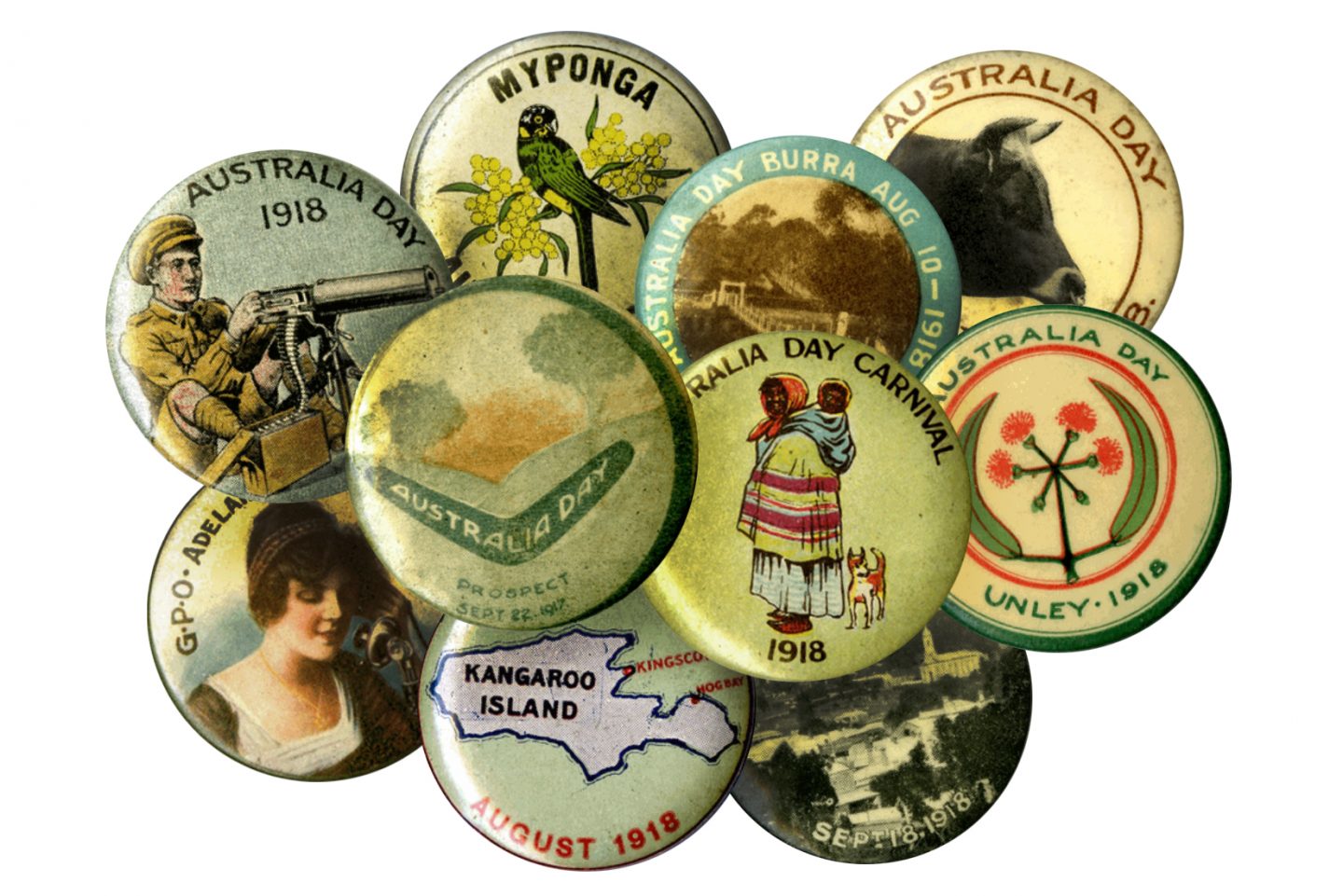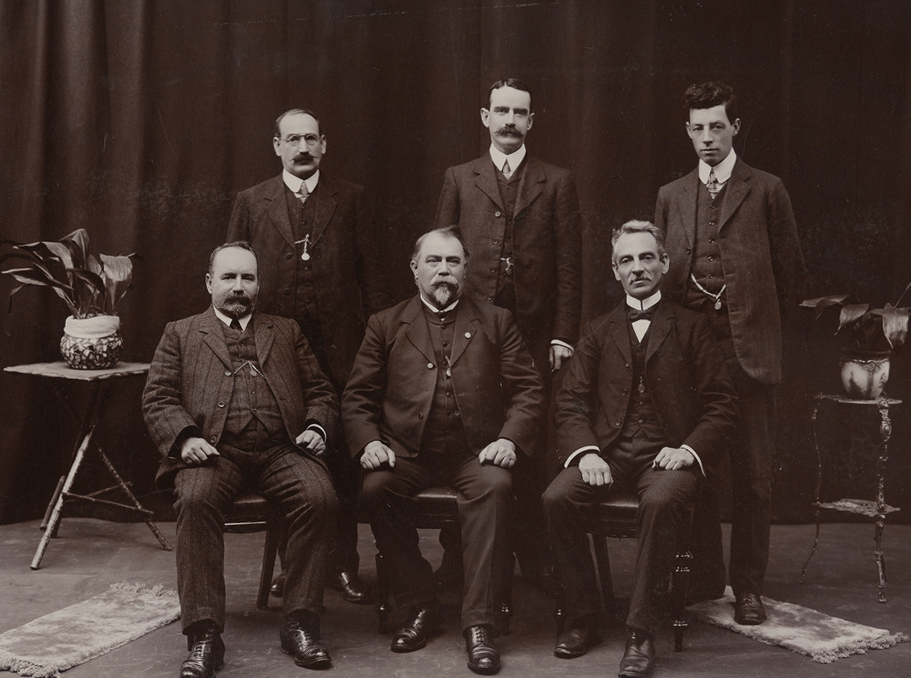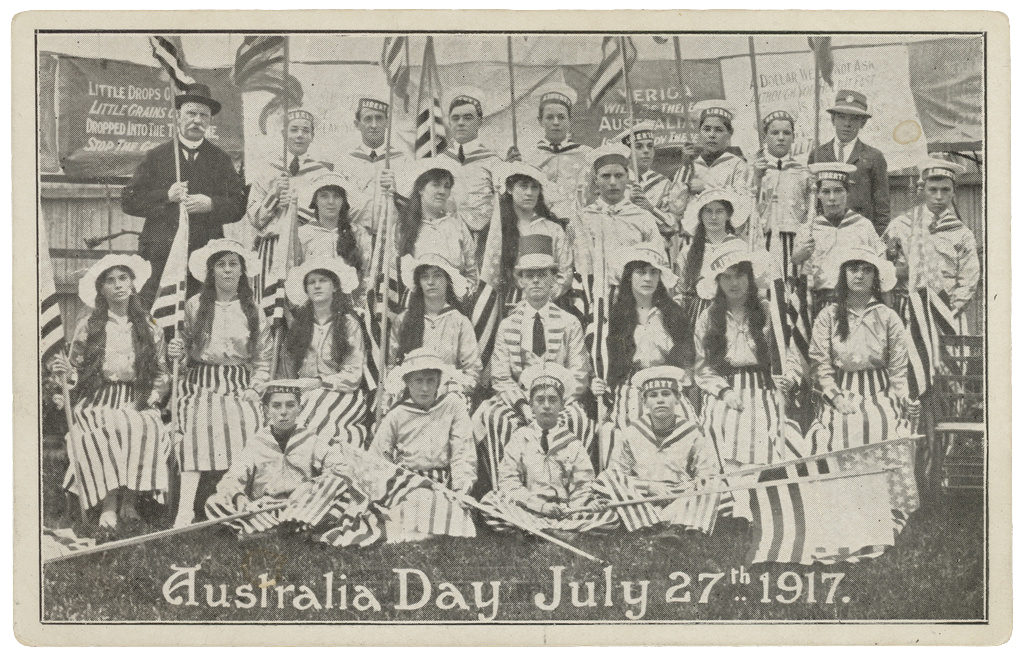
Walter Marsh
Walter is a writer and editor living on Kaurna Country.

The debate around January 26 as a day of national celebration grows hotter each year, but what does the date mean for South Australia?
As the anniversary of the Union Jack being hoisted above Sydney Cove by officials of the First Fleet, January 26’s place as a day of national celebration has been disputed almost as long as it has been recognised. Symbolising the beginning of British colonisation, calls for the moving or even abolition of Australia Day grow louder each year, even as federal and state governments take measures to quash dissent at a local government level.
But when, and why, did South Australia adopt the holiday in the first place?
Distinct from its eastern neighbours, South Australia was founded as a standalone province in 1836, giving it not only its own ‘Commemoration Day’ to celebrate but also a sense of nationhood independent of the penal colonies to the east. Throughout the 19th century, the celebration of 28 December 1836 – the date South Australia was officially proclaimed – was recognised as the beginning of South Australia.
Now Proclamation Day, this date has also routinely been the subject of protest, representing the beginning of colonisation in this part of the world in much the same way that 26 January does. (While South Australia’s founding documents included measures specifically designed to treat First Nations better than its eastern neighbours, in practice these were swiftly ignored.)
South Australia first commemorated January 26 in 1888, joining a continent- wide recognition of the centenary of the day that New South Wales had recognised as its ‘birthday’ from 1818.
But it didn’t stick.
“That year every state or colony held a public holiday, even South Australia,” says University of Adelaide historian Carmel Pascale, who is completing a PhD thesis examining the development of Australian nationalism in South Australia through commemorative events like Australia Day. “But the interesting thing is that all the other colonies continued that public holiday on an annual basis – but South Australia didn’t.”
Despite pressure from other states, the Victoria-based Australian Natives Association (‘Australian Natives’ generally meant the Australian-born descendants of British colonists), and some local nationalists, it would take nearly a decade after Federation before South Australia decided to celebrate continental unity.
But consistency with other states wasn’t the only reason: they also didn’t want to lose a summer public holiday, Pascale says, which formed another reason for our eventual adoption of New South Wales’ big day.

“In 1910 South Australia did finally adopt Foundation Day as a public holiday, but that was to replace another public holiday in January – Accession Day,” Pascale says of the 22 January holiday which previously marked the anniversary of King Edward VII’s crowning. “When the King died in May, 1910, they thought there was no point in celebrating Accession Day anymore, so we might as well bow to the pressure.
“But they wanted to keep their January holiday – that was important,” Pascale says.
“It was generally admitted to be desirable to have a holiday in the hottest part of January.”
Attorney-General William Denny, 24 November 1910
In November 1910, chief secretary Frederick Samuel Wallis explained to the Legislative Council why a new Holidays Bill had to be quickly passed. “Now that a new King reigned and Accession Day was a different date there was no reason for keeping that holiday,” reads a 26 November Advertiser report of Wallis’ speech. “January 26 was now generally recognised in Australia as ‘Foundation Day’, and it was proposed to honour that national sentiment by making that date a public and bank holiday,” Willis explained, while noting that “a day of rest at the end of the hottest month had been very acceptable, and probably the permanent arrangement contemplated would meet with general approval”.
Attorney-General William Denny echoed the sentiment in the lower house. “It was generally admitted to be desirable to have a holiday in the hottest part of January,” he said, “and January 26 had been fixed in order to honour the Australian national settlement anniversary.”
It’s an argument that even today sounds familiar:
Celebrations were relatively low-key on January 26 in 1911, with a ‘Smoke Social’ arranged at a city cafe by the Australian Natives Association and attended by Lord Mayor L Cohen and members of Parliament. Herbert Solomon, chief president of the ANA, remarked that, “Upwards of 500 years Australia was known to the world, but no nation seemed to think it worthwhile to take possession of the land,” a claim that blithely ignores the existence and sovereignty of First Nations far beyond the 500 years stated.
Even after 1911, however, the celebration of January 26 was the subject of contention, with many critics uneasy about what it represented. But Aboriginal dispossession was not on their radar, just a fear of the ‘convict taint’ long reviled by South Australians. Some instead favoured the anniversary of Captain Cook’s first visit to Botany Bay on 28 April 1770, “a date unblackened by memories of handcuffs and leg irons” (The Advertiser, 26 January, 1933).
“The grand tree of Australia’s freedom was watered with the tears and blood of convicts,” Gawler’s The Bunyip wrote in January 1913. “Australia will never tolerate caste while remembering that the caste laws of England condemned men to the countless cruelties of transportation for snaring a rabbit.
“An Australian spring day would prove a more attractive advertisement to the world of the Commonwealth and the white man’s guard and hope in the Pacific,” argued The Bunyip, reaffirming both an exclusively European vision of Australia, and the prioritising of the weather over historicity in debates over national days of celebrations.

Of course, the term ‘Australia Day’ was coined for an entirely different occasion in 1915. A patriotic celebration of nationhood manufactured expressly for the purposes of raising money for wounded soldiers, the first ‘Australia Day’ was held on 30 July, then on various dates in August and September. The title was transferred to January 26 in 1935.
Ultimately, South Australia’s decision to adopt January 26 was influenced by a desire to retain a summer day off, as much as a local appreciation of New South Wales’ colonial origins. And despite calls for ‘unity’, from the outset the date has been couched in the exclusionary language of White Australia.
The sentiment is crystallised in a January 26, 1888 editorial in The Advertiser: “Since the first white man a century ago – and further back we need not look – sought a home on the shores of Port Jackson, much, as we have seen, has occurred to inspire hopefulness for the future as well as pride in the past.”
Today, there is good reason to look further back. When clinging to January 26 as a national holiday out of a sense of inertia or tradition, it is worth reflecting on the perspectives of those who first made the decision – and whether the Australia of 2020 should be beholden to same outlook.

Walter is a writer and editor living on Kaurna Country.